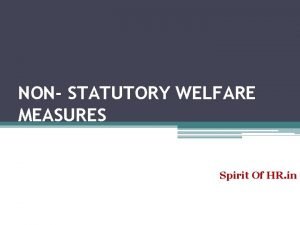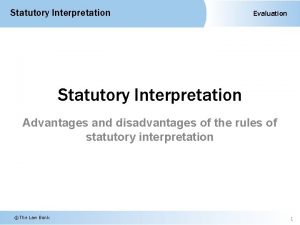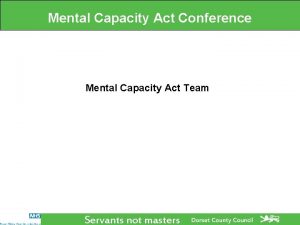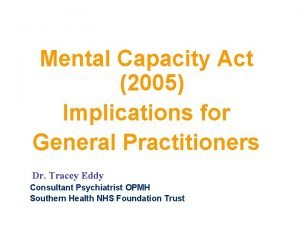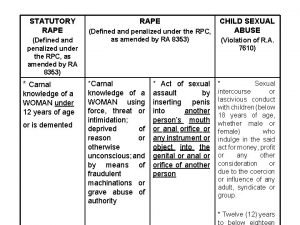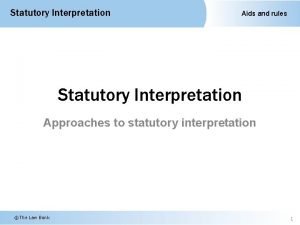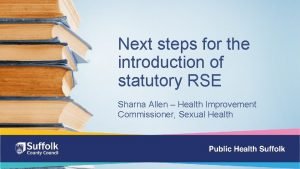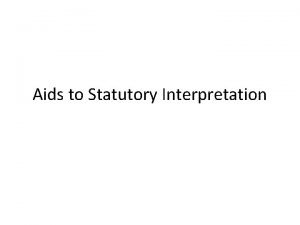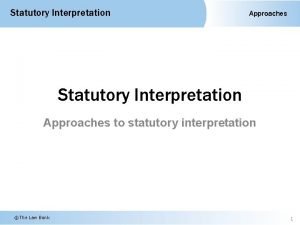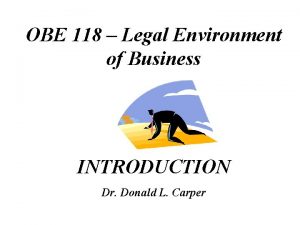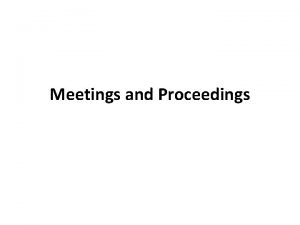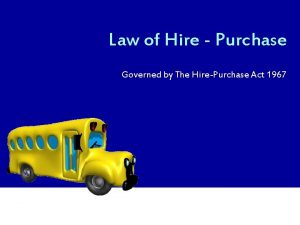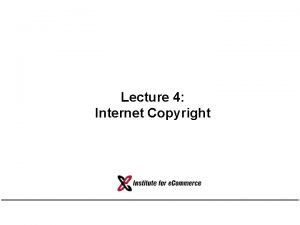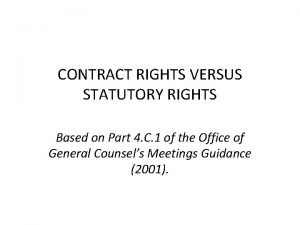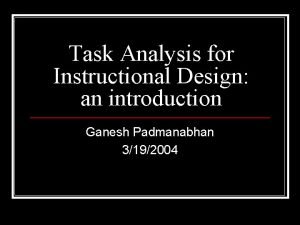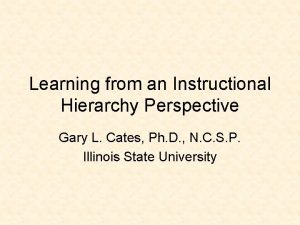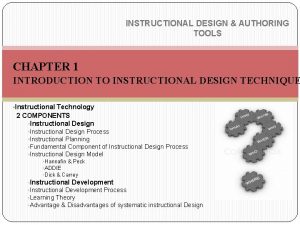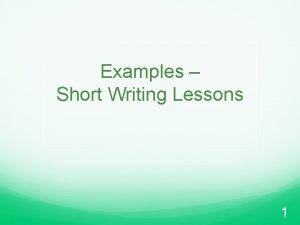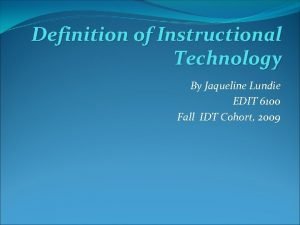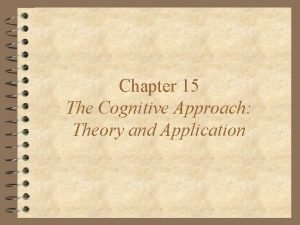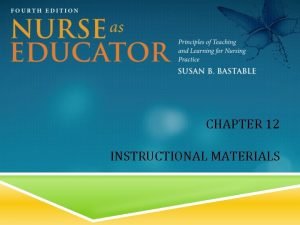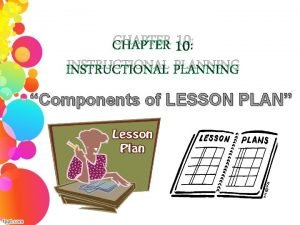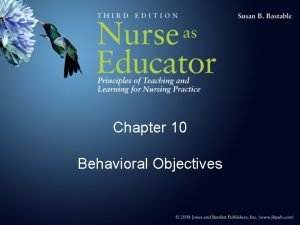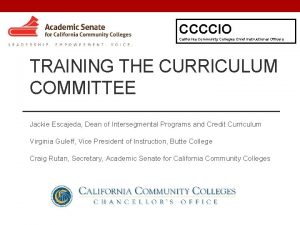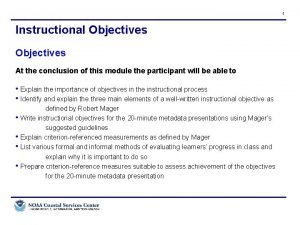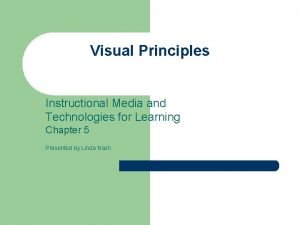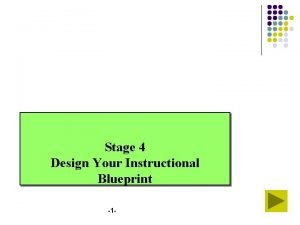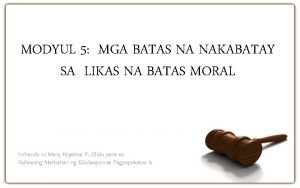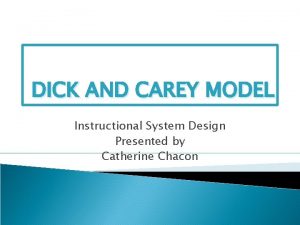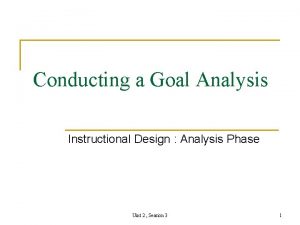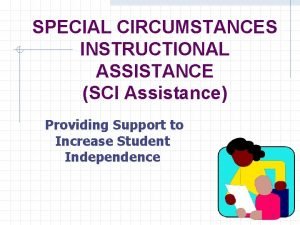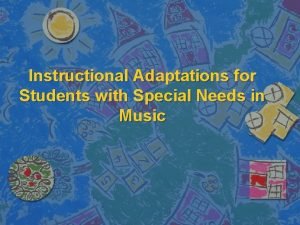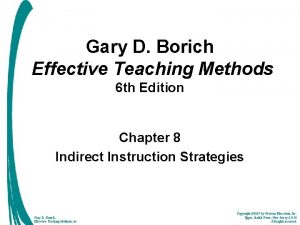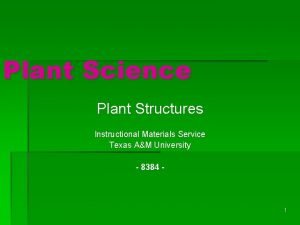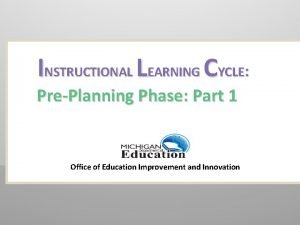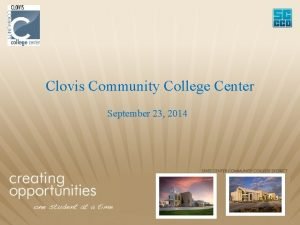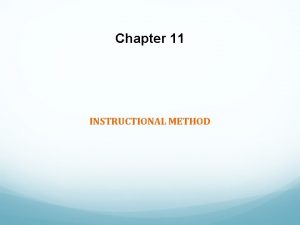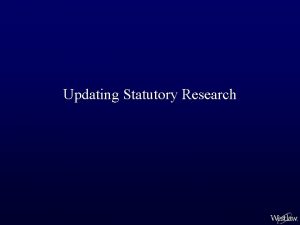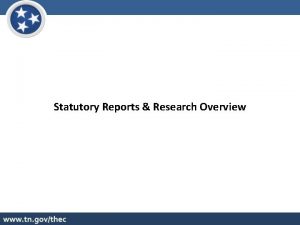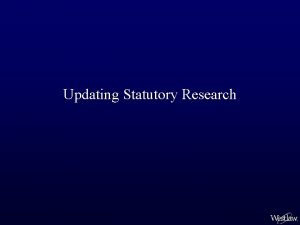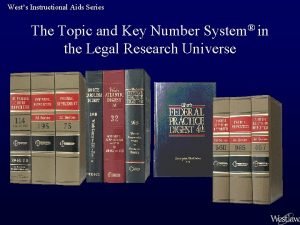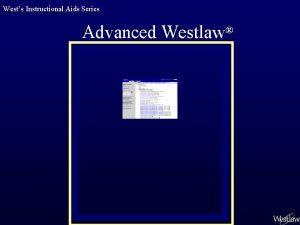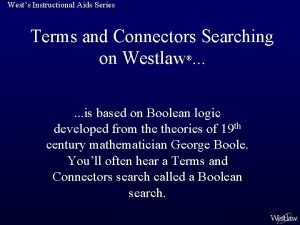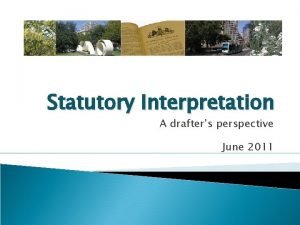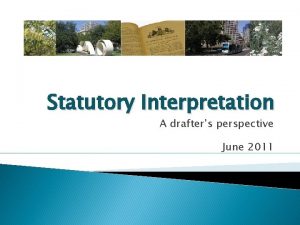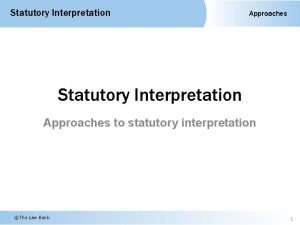Wests Instructional Aid Series Statutory Research Wests Instructional
































































































- Slides: 96

West’s Instructional Aid Series Statutory Research

West’s Instructional Aid Series Contents • • • Introduction The Legislative Process Anatomy of a Statute Statutory research: Print and Online Updating Statutory Research Expanding Statutory Research – – Key. Cite® Case Law (Annotations) Legislative History Secondary Sources

Introduction Back to Contents

Introduction Sources of American Law Statutory Law is enacted by the Legislatures. Case Law is decided by the Courts. Regulations are issued by the Executive Branch (Agencies).

Introduction Federal Statutes • Federal statutes are codified in the United States Code. – The United States Code (USC) is the official version of the statutes and is published by the Government Printing Office. – The United States Code Annotated® (USCA)® in print is published by West. – USCA is the database on Westlaw® that contains the USCA.

Introduction State Statutes • Each state has a statutes publication. The publication might be called statutes, statutes annotated, laws, code, or code annotated. The annotated versions enhance your ability to find relevant cases and statutes. • XX-ST-ANN (where XX is the state’s -letter postal abbreviation) is the database identifier for annotated state statutes Westlaw. two on

Introduction State Legislative Processes • Most state legislatures are modeled after the United States Congress and consist of two houses. Only Nebraska has a one-house legislature. • Legislation moves through state legislatures in much the same way it moves through Congress. • The governor signs or vetoes the legislation and there are state provisions for overriding a governor’s veto. • What is said about the federal legislative process is usually true of state legislative processes. The model for this presentation will be the federal statutes.

Introduction Statutes: the Neglected Side of Legal Research • Most of what you learn in law school will be based on the common-law traditions of the courts. • Statutory law is often obscurely or ambiguously worded. • It must be interpreted by case law. • This case law often becomes a more accessible source of law than the statute. • Statutory research may seem complicated. This is due, in part, to the fact most that researchers are not trained in statutory research.

Introduction Statutes are the Neglected Side of Legal Research But… • Statutes are around to stay. They are the cornerstone of our legal system. • Only a court of competence can declare a clearly worded statute unconstitutional. • Don’t fight them. There is help!

The Legislative Process Back to Contents

The Legislative Process • Introduction of a bill (proposed legislation) • Passed by both houses of Congress • Signed by president or president’s veto is overridden • Becomes a “session law” or “public law” • Incorporated into statutory code

The Legislative Process A Bill Is Introduced • A bill is introduced by a sponsor(s) in one or both houses of Congress. • A bill is assigned a bill number (H. R. 14, 107 th Cong. , 1 st Sess. (2001)). • This bill number usually follows the proposed legislation through hearings, amendments, congressional committees, etc. , until enactment or the end of the current legislative period.

The Legislative Process A Bill Is Introduced • A companion bill may be introduced in the other house of the legislature at any time. • Committee hearings may be held and amendments to the bill may be made. If the committee votes favorably on the bill, a committee report in support of the bill accompanies the bill back to the floor in many jurisdictions. • A bill may die in committee and never reach the full house for vote.

The Legislative Process Bill S. 940 Sponsors Short Title Federal bill S. 904 (Leave No Child Behind Act of 2001), sponsored by Senators Dodd, Wellstone, and Kennedy, as it appears in the Congressional Bills – 107 th Congress database.

The Legislative Process A Bill Becomes Law • When the bill passes one house, it is sent to the other house for consideration. • The other house may approve and pass the bill to the president in identical form. • More likely, the other house will propose a variation of the bill and both houses must negotiate a compromise. • When both houses pass the bill in identical form, it is sent to the president for a signature or veto.

The Legislative Process A Bill Becomes Law • If signed (or not vetoed within 10 days), the bill becomes a “session law” or “public law. ” • If the president vetoes the bill, the veto may be overridden by two-thirds majority in both houses. (If the president takes no activity on the bill at the end of a legislative session the bill is, in effect, vetoed. This is called a “pocket veto. ”) • The public law is renumbered using the number of the congressional session and the numerical order in which the law was enacted: • P. L. 107 -14 and P. L. 107 -15 are the 14 th and 15 th bills to be enacted by the 107 th session of Congress.

The Legislative Process A public law may • add a section (statute) in the statutory code • change language in a section (statute) • repeal a section (statute) of the statutory code • re-number a section (statute) • do all of the above

The Legislative Process Public Laws Are Published • An enacted law is first published officially by the Government Printing Office as an individual slip law and sent to government depository libraries and other libraries that subscribe to these publications. • Public laws are published in compiled volumes in chronological order in The Statutes at Large, the official government publication. There is a two to four -year lag in publication of these volumes.

The Legislative Process Public Laws are Published • The U. S. Code Congressional and Administrative News® (USCCAN), published by West, issues monthly pamphlets including newly enacted laws. • The monthly USCCAN pamphlets are reissued in bound volume after each congressional session. • Public laws are also published in the USCCAN and US-PL (United States Public Laws) databases on Westlaw.

The Legislative Process A slip law as it appears on Westlaw in the US-PL database shortly after enactment. There also archived public laws in the US-PL-OLD database, which contains public laws from 1973 to the previous session of Congress.

The Legislative Process A Public Law Is Codified • The public law then changes the statutory code to: • bring all laws on the same topic together • eliminate all repealed or expired statutes • unite amendments with the original statute • This process is called codification • the United States Code is divided into 50 titles, often called codes (see next screen) • Title 11 is the Bankruptcy Code • Title 26 is the Tax Code

The Legislative Process United States Code is organized in broad subject categories called titles. The 50 titles are in rough alphabetical order.

The Legislative Process Each title is further divided into individual sections, which contain the actual text of the statutes. (The words section and statute are usually synonymous. )

The Legislative Process A single public law may amend or affect many sections in different titles of the Code. The Public Safety Officer Medal of Valor Act of 2001 or P. L. 107 -12 amended sections in Titles 42 and 15 of the USCA.

The Legislative Process Sections in the public law Codification in the U. S. Code Public Law 106 -120, the Intelligence Authorization Act for the Fiscal Year 2001, has been codified in both Title 50 and Title 21 of the United States Code. The USCA-POP (USCA Popular Name Table) database on Westlaw shows where a public law section has been codified in the United States Code Annotated.

Summary of the Legislative Process Bill Passes Congress or State Legislature President or Governor Signs Bill Session Law/ Public Law Statutory Code Codification occurs when the language of the session or public law changes the statutory code in some way.

Question Which of the following is a true statement? 1. Each public law amends a single statute. 2. A slip law is the final version of a statute. 3. Codification is the process in which sections of public laws amend, add to, or repeal the relevant portion(s) of the United States Code. 4. The president’s veto of a bill may be overridden by a majority of both houses.

Question Which of the following is a true statement? 1. Each public law amends a single statute. 2. A slip law is the final version of a statute. 3. Codification is the process in which sections of public laws amend, add to, or repeal the relevant portion(s) of the United States Code. 4. The president’s veto of a bill may be overridden by a majority of both houses.

Anatomy of a Statute Return to Contents

Anatomy of a Statute The United States Code (USC) • • • Is issued every six years Is updated annually Is arranged into 50 titles References the Statutes at Large citation Includes historical notes and cross-references to related sections • Includes an index, a table of acts cited by popular name, and conversion tables that allow you to move between the present version and earlier versions of the Code

Anatomy of a Statute The United States Code • The United States Code (USC), as published by the government, has several drawbacks – There is a publication lag, especially for the annual supplements. – There are no references to interpreting case law. The meaning of a statute is often unclear and must be interpreted by the courts. The decisions of the courts often become more important sources of law than the text of the statutes.

Anatomy of a Statute The United States Code Annotated (USCA) The USCA contains the text and features of the statute as they appear in the USC, plus • • • references to legislative history, and federal regulations references to the West Key Number System references to law review and journal commentaries library references to texts and treatises Notes of Decisions (annotations)

Anatomy of a Statute United States Code Annotated Citation : 18 USCA 241 Text The text of the statute in the USCA is unchanged from how it appears in the USC, as published by the Government Printing Office.

Anatomy of a Statute United States Code Annotated Credits (Text Amendments) are past session laws that enacted or modified the statute. Historical and Statutory Notes (Editor’s Notes) are compiled by West attorney-editors and give a more detailed legislative history of the statute.

Anatomy of a Statute United States Code Annotated Cross-references (to other USCA sections) Library references (to many secondary sources) References to topic and key numbers Law review and journal commentaries Texts and treatises

Anatomy of a Statute United States Code Annotated Index to the Notes of Decisions (annotations). Subjects are listed alphabetically

Anatomy of a Statute United States Code Annotated • Notes of Decisions (annotations) are summaries of how courts have interpreted the statute with links to the case law. • Notes of Decisions are the headnotes from cases that West attorney-editors have identified as significantly interpreting or applying the statute.

Question Notes of decisions are also called 1. Headings 2. Annotations 3. Credits 4. Statutory history

Question Notes of decisions are also called 1. Headings 2. Annotations 3. Credits 4. Statutory history

Statutory Research: In Print and Online Back to Contents

Print Research Aids • An alphabetical General Index aids you in finding relevant statute sections. – The index has “access words” that cross -reference formal index headings. – The Index references the relevant title(s) and section(s) (statutes). • The Popular Name Table, in the last index volume, helps determine where a public law was codified. Popular Name Table

Research Online Sarah Jones has finished law school, passed the bar, and found a job with a legal aid service. Four years of college and three years of law school have run her student loan debt to well over $100, 000 and her salary will never stretch to make the payments on that amount. Sarah is considering filing for bankruptcy. Could this extreme measure solve Sarah’s problem?

Research Online Finding Relevant Statutes Online: The Find Service There are several different but effective ways to find the Exceptions to Discharge in Bankruptcy statute (section). • If Sarah knows the citation of the discharge statute, she can simply type it in the Find this document by citation: text box on the Law School page or click the Find link on the toolbar. Find 11 USCA 523

Research Online Find a State Statute by Citation • You can type the following in the Find this document by citation: text box: – Enter xx st nnn. nn (where xx stands for the state’s twoletter postal abbreviation and nnn. nn stands for the citation number) – Example: mn st 313. 01 (do not include paragraph letter or number, as in 313. 01(a)(4)) • For code states or other states with irregular numbering, simply type xx st in the Find this document by citation: text box. See next screen.

Research Online Statute Template • A template for the state’s statutes is displayed. • Just type in the statute number in the appropriate code’s text box. • Click GO beside the text box and you will retrieve the statute, in this case, Texas Agricultural Code, section 41. 002.

Research Online Documents in Sequence If Sarah isn’t sure she has retrieved the correct section but believes she is very close to it, she could use the Documents in Sequence feature by selecting Documents in Sequence under the Tool link at the bottom of the right frame. Docs. in Seq. Tools

Research Online Documents in Sequence • Now Sarah will be viewing 11 USCA 524. • The Doc in Seq arrows at the bottom of the right frame allow her to move forward or backward, statute by statute, just as if she were paging through the statutes in print. Docs in Seq

Research Online Table of Contents for Statutes • Sarah could access the Table of Contents service which is available for each statutory database on Westlaw and open it to the desired section. • The Table of Contents service is also a great way for Sarah to browse the sections around the desired statute to see if any have relevance to her situation. TOC link on Links for Tab 11 USCA 523

Research Online A Caption and Prelim Field Search • • If Sarah knows that Title 11 is the bankruptcy title and she needs the exceptions to discharge statute, the following field restricted search using terms and connectors would be effective: ca, pr(“title 11” & exception) This search retrieves 11 USCA 523. The terms can be in either the caption or the prelim fields. Prelim (pr) field Caption (ca) Field

Research Online A Search for a Key Number Case Law Digest Field • Sarah could try a Terms and Connector search in the digest field of a case law database. (Here we will use the ALLFEDS database. ) • For example: di(discharg! /p "student loan”) • This search yields many cases and several relevant key numbers related to 11 USCA 523.

Research Online • Sarah notices that one headnote states that undue hardship is the only basis for discharging student loans. • The key number 51 K 3351. 10(1) assigned to this headnote links to other cases discussing the same point of law. Sarah will have to examine these cases to determine if her situation can be considered a “hardship. ” • There also references to the controlling statute(s). 51 k 3351. 10(1) 11 USCA 523

Research Online A Natural Language Search • Sarah could run a Natural Language search, which can be very effective in annotated statute database, in that. • The looser structure of a natural language search will often be more successful than a terms and connectors search in capturing the unpredictable language of a statute. • The search: can student loans be discharged in bankruptcy retrieves the Notes of Decisions shown on the next slide.

Research Online educational benefit overpayment or loan Student loan 11 USCA 523 is the first document displayed. The “best” portion of the statue is in the annotations in the familiar language of the courts. Sarah retrieved this document even though the text of the statute does not mention a student loan exception to discharge in bankruptcy. (The text of the statute uses “educational benefit overpayment or loan”. )

Research Online Using Key. Search to Find Statutes and Cases • If Sarah is unfamiliar with both the language of the law and key numbers, the Key. Search service could be the place to start research. • You can access Key. Search from anywhere on Westlaw by clicking Key. Search on the toolbar. Access Key Search

Research Online Using Key. Search to Find Statutes and Cases • Key. Search divides the law into widely recognized areas of the law. • Bankruptcy is one such area.

Research Online Key. Search • The opened Bankruptcy folder reveals the bankruptcy subtopics, one of which is Discharge. • If Sarah opens the Discharge subfolder and she will find Educational Loans.

Research Online • Sarah selects the All Federal Cases (ALLFEDS) database. • She could click the View/Edit Full Query link to see the preformulated query. • Notice that the query is a combination of words and key numbers. • Sarah could additional terms.

Research Online • This is one of the cases retrieved from the ALLFEDS database and it talks about discharging student loans on the basis of hardship. • There is also a reference to the discharge statute. Hardship 11 USCA 523(a)(8)

Updating Statutory Research Back to Contents

Updating Research Verifying that Statutory Research Is Current 1. Sarah has found the statute and interpreting case law that says that student loans are not discharged in bankruptcy. 2. She has found cases that state the only exception is on the basis of undue hardship. 3. What if the statute has been recently amended or repealed or case interpretation of the statute has changed?

Updating Research Official Print Updates Print updates • Slip laws are individually printed and sent to all U. S. government depository libraries. • The Statutes at Large is the earliest official compilation of all laws passed at the end of each session of Congress. • Published in chronological order • No general index • Publication lags about two years behind the enactment of the public laws

Updating Research Most Current Print and Westlaw Updates • U. S. Code Congressional and Administrative News (USCCAN) issues monthly pamphlets. • After each session, the monthly USCCAN pamphlets are reissued in a bound volume. • Laws are in the US-PL (United States Public Laws) database on Westlaw within hours of passage. • XX-LEGIS is the identifier for the state public law databases on Westlaw. State laws go online as soon as they are received by West.

Updating Research United States Code Annotated Updates Always check in the following print publications to determine current law: • Cumulative pocket parts • Interim pamphlets and statutory supplements that include the public law changes to the code and recent notes of decisions from cases that have construed the statute since the last supplement was published.

Updating Research Updating a Statute Online: Key. Cite for Statutes Use Key. Cite History to determine whether the statute is good law

Updating Research Key. Cite History for Statutes Flags Show the Status of the Statute A red flag means that the statute has been • Recently amended • Repealed • Ruled unconstitutional • Preempted This statute has been declared unconstitutional or preempted. All or a portion of the statute may no longer be good law.

History Click the red flag or History on the Links for tab to see that this statute has been held unconstitutional by several courts.

Updating Research Key. Cite History A yellow flag means that the statute • Has pending legislation • Has been renumbered • Has been transferred • Contains an editor’s amendment note. Both Key. Cite History and Citing References link to display Pending Legislation that might affect statute. The statute is good law but should be monitored for changes.

Click the yellow flag on the Links for tab to display this statute’s Pending Legislation. Note that you can link to the bills that are pending legislation.

Updating Research Key. Cite History for Statutes includes 1. Updating documents (recently passed public laws that have amended or repealed the statute) 2. Pending legislation that may affect the statute 3. Credits (citations to past public laws that have enacted, amended or renumbered a statute) 4. Historical and statutory notes that describe the legislative changes that have affected that statute 5. Cases that have held that the statute is unconstitutional

Question A red flag on a statute can mean that the statute 1. Has been declared unconstitutional 2. Has pending legislation 3. Has been amended 4. Both 1 and 3

Question A red flag on a statute can mean that the statute 1. Has been declared unconstitutional 2. Has pending legislation 3. Has been amended 4. Both 1 and 3

Expanding Statutory Research Back to Contents

Expanding Research Expanding Statutory Research • Key. Cite Citing References • Case law that has interpreted or applied the statute – Annotations (Notes of Decisions) • Legislative history • Secondary sources – American Law Reports – American Jurisprudence 2 d

Expanding Research-Key. Cite Citing References Many USCA sections have many citing references. In the right frame are some of the 25, 756+ citing references to 11 U. S. C. A. 523.

Expanding Research-Key. Cite Expanding Research Using Key. Cite • Key. Cite Citing References consists of citations to legal documents that discuss or mention the statute. • Citing references include: • Pending legislation • Notes of Decisions (Annotations) • Cases on Westlaw that do not appear in notes of decisions • Administrative materials (includes agency decisions) • Secondary sources, such as ALR® articles, Am Jur 2 d® sections, law reviews, and treatises • Briefs

Expanding Research-Key. Cite Limiting Key. Cite Citing References Limit Key. Cite Display • 11 USCA 523 (the Exceptions to Discharge statute) has 25, 756 citing references. • Click the Limit Key. Cite Display button near the bottom of the screen to limit the citing references to the ones of most use to you.

Expanding Research-Key. Cite You can limit citation results by any number or combination of: Student Loans Cases • Notes of Decisions (by sub-topic) • Locate terms • Jurisdiction • Date • Document type Apply Select the desired criteria and click Apply.

Expanding Research-Key. Cite The original 25, 756 citing documents have been reduced to the 12 documents that meet the criteria we specified.

Expanding Research-Notes of Decisions Expanding Research Using the Notes of Decisions • Many statutes are obscurely worded and must be interpreted by case law. • Notes of Decisions (or annotations) are headnotes of cases that significantly interpret or apply the statute. • Case law compares the language of the statute with the language of other statutes, reconciles language within the statute, and explores legislative history concerning the statute to discover the intent of the legislature. • The language of the case law often becomes more useful for the researcher than the language of the statute.

Expanding Research-Notes of Decisions • Notes of decisions can be accessed by clicking the Notes of Decisions link on the Links for tab when viewing a statute. • Notes of Decisions are preceded by a main index and, if needed, subdivision indexes. • Each subdivision deals with one topic of interpretation of the statute by the courts. Link to Notes of Decs. Notes of Decisions Index

Expanding Research-Notes of Decisions • Above are the Notes of Decisions for 11 USCA 523 under the Educational or Student Loan subdivision. • Note the links to the full-text cases.

Expanding Research-Notes of Decisions Print Notes of Decisions • As in the online Notes of Decisions, the print Notes of Decisions are the last portion of the annotated statute format. • The Notes of Decisions for some statutes may be hundreds of pages long.

Expanding Research-Legislative History Because so many statutes are obscurely worded: • courts often look to the legislative history of a statute to determine the intent of the legislators. • debates in Congress or congressional committees, early drafts of the bill, testimony of experts, amendments to the language of the proposed statute, etc. , often reveal the intent of the legislature. Committee reports provide the most definitive evidence of legislative intent.

Expanding Research-Legislative History Earliest Legislative History Legislative history may include documents that exist even before a bill is enacted. • Presidential recommendations. • Congressional and committee hearings in sessions in which the bill was discussed but not passed. • Agency memorandum. You should not limit your research only to the legislative session in which the bill was enacted.

Expanding Research-Legislative History in Annotated Statutes You can access Legislative History directly from the link on the Links for tab in the left frame. Click Text Amendments, also called Credits. They are the public laws that created and amended the statute. Text Amendments Credits Public Laws Text Amendments

Expanding Research-Legislative History You can also link to the Editor’s Notes, also called the Historical and Statutory Notes, that follow each USCA section. Editor’s Notes give more detailed information regarding the legislative history of the statute, including House and Senate Reports, Committee Reports and explanations of the change in language from one report or public law to the next. Editor’s Notes

Expanding Research-Legislative History Early Legislative History on Westlaw • Early congressional hearings and testimony can be found in several databases on Westlaw, including USTESTIMONY, USPOLTRANS, CQ-NEWS, BNA-TRACK and APN-HO. • Presidential messages can be found in the PRES-DAILY, USPOLTRANS, USCCAN, BNA-PRSCAL, and CQ -NEWS databases on Westlaw. • Committee Reports, the most definitive evidence of legislative intent, can be found in the LH database.

Expanding Research-Legislative History Discussion and Testimony Regarding a Bill Discussions/debates regarding a federal bill can be found in – the Congressional Record in print and on Westlaw in the CR database – United States Code Congressional & Administrative News (USCCAN) in print and in the USCCAN database on Westlaw

Expanding Research-Legislative History of Modification of Bills Language of bills as they are modified in the legislative process can be found in: • microfiche in government depositories, including many law libraries • materials from the clerk of the legislature • Congressional Record and USCCAN in print • CR, USCCAN, CONG-BILLTXT, and LH federal databases on Westlaw • XX-BILLTXT (where XX is state’s two-letter postal abbreviation) databases on Westlaw.

Expanding Research-Legislative History The Current Status of a Bill The status of a bill can be found in • Federal materials – print status tables – US-BILLTRK (United States Bill Tracking) • State materials – XX-BILLTRK (where XX is the two-letter postal abbreviation of the state) databases on Westlaw

Bill Referred to Committee Under My Westlaw link above the toolbar, you can set up a Legislative History tab page. Bill Referred to Committee When you click any step in the legislative process, a search screen is displayed showing databases where that material can be found. Databases

Expanding Research-Secondary Sources • Secondary sources are analytical materials that comment on, explain, and analyze a wide range of legal topics. • Secondary-source materials are prepared by legal experts in a non-litigious context. • Most contain a detailed discussion of the legal topic. • Most are carefully researched. Most include references to relevant cases and statutes and other secondary sources.

Expanding Research-Secondary Sources • The following are some of the secondary sources that are available in print and on Westlaw that can be used to expand your statutory research. • American Law Reports (ALR) – ALR database • American Jurisprudence (Am Jur 2 d) – AMJUR database • Law review articles – JLR (Journals and Law Reviews) database • Restatements – REST databases • West’s Digests – -HN is suffix for digest (headnote) databases, e. g. , MN-HN, ALLFEDS-HN

Expanding Research-Secondary Sources This is a portion of an ALR article discussing the legislative history of 11 USCA 523 in reference to whether student loans can be discharged in bankruptcy. The same ALR article could have been retrieved using the ALR link on the Links for tab while viewing the statute in the right frame. ALR

Expanding Research-Secondary Sources One of several American Jurisprudence sections that discuss whether loans can be discharged in bankruptcy. This section discusses exceptions to the student loan exception of discharge of debt in bankruptcy.

There are many ways to approach statutory research. No one method is correct. If one method doesn’t seem to be working, try another. Still need help? Call the West Reference Attorneys at 1 -800 -850 -WEST They are available 24 hours a day, seven days a week.
 Statutory and non statutory welfare measures
Statutory and non statutory welfare measures How to use chalkboard effectively
How to use chalkboard effectively First aid merit badge first aid kit
First aid merit badge first aid kit Greenhill medical centre
Greenhill medical centre Statutory interpretation quiz
Statutory interpretation quiz Advantages of the literal rule
Advantages of the literal rule 5 principles of the mental capacity act
5 principles of the mental capacity act Statutory principles of the mca
Statutory principles of the mca Non statutory subjects national curriculum
Non statutory subjects national curriculum Statutory rape rpc
Statutory rape rpc Aids to statutory interpretation
Aids to statutory interpretation Statutory relationship
Statutory relationship Rse steps
Rse steps Extrinsic and intrinsic aids to statutory interpretation
Extrinsic and intrinsic aids to statutory interpretation Sompc
Sompc Independent maori statutory board
Independent maori statutory board Veterinary statutory body
Veterinary statutory body Statutory interpretation
Statutory interpretation Powell v kempton park racecourse
Powell v kempton park racecourse Statutory bonus meaning
Statutory bonus meaning Substantive law example
Substantive law example Nbsfo
Nbsfo Adjournment meeting
Adjournment meeting Statutory rights of hirer
Statutory rights of hirer Ano ang karapatang panlipunan at pangkabuhayan
Ano ang karapatang panlipunan at pangkabuhayan Statutory interpretation outline
Statutory interpretation outline Statutory rights example
Statutory rights example Maclaurin series vs taylor series
Maclaurin series vs taylor series Heisenberg 1925 paper
Heisenberg 1925 paper Taylor series of composite function
Taylor series of composite function Maclaurin polynomial
Maclaurin polynomial P series server
P series server Series-series feedback amplifier examples
Series-series feedback amplifier examples Series aiding and series opposing
Series aiding and series opposing Arithmetic series formula
Arithmetic series formula Task analysis instructional design
Task analysis instructional design Tix instruction in sic
Tix instruction in sic The main aim of micro teaching is
The main aim of micro teaching is Maximizing instructional time in the classroom
Maximizing instructional time in the classroom Instructional hierarchy
Instructional hierarchy Marzano's 9
Marzano's 9 Comparing instructional design models
Comparing instructional design models Instructional design authoring tools
Instructional design authoring tools High-yield instructional strategies
High-yield instructional strategies Instructional procedures examples
Instructional procedures examples Dynamic instructional design model
Dynamic instructional design model Definition of instructional technology
Definition of instructional technology Importance of educational media center
Importance of educational media center Thought stopping
Thought stopping Visual instructional materials
Visual instructional materials Self-instructional training example
Self-instructional training example Still projected display materials
Still projected display materials Components of instructional planning
Components of instructional planning Technique definition
Technique definition California community college chief instructional officers
California community college chief instructional officers Chief instructional officers california community colleges
Chief instructional officers california community colleges What is assure
What is assure Conclusion of instructional objectives
Conclusion of instructional objectives Visual instructional media
Visual instructional media Instructional blueprint
Instructional blueprint Seels ve glasgow modeli
Seels ve glasgow modeli Stages of instructional hierarchy
Stages of instructional hierarchy Kemp design model
Kemp design model Site:slidetodoc.com
Site:slidetodoc.com Quotes about data driven instruction
Quotes about data driven instruction Instructional effectiveness
Instructional effectiveness Scaffolding instructional design
Scaffolding instructional design Approach model
Approach model Goal analysis instructional design
Goal analysis instructional design Concept of instructional technology
Concept of instructional technology Arcs instructional design
Arcs instructional design Heograpiya meaning araling panlipunan
Heograpiya meaning araling panlipunan Using and evaluating instructional materials
Using and evaluating instructional materials The bscs 5e instructional model: creating teachable moments
The bscs 5e instructional model: creating teachable moments Hisd tads manual
Hisd tads manual Special circumstances instructional assistance assessment
Special circumstances instructional assistance assessment Contoh model instructional games
Contoh model instructional games Robert gagne biography
Robert gagne biography Marzano strategies
Marzano strategies Momentum in classroom management
Momentum in classroom management Ict instructional materials
Ict instructional materials Instructional design portfolio
Instructional design portfolio Instructional adaptations for special needs students
Instructional adaptations for special needs students Indirect instruction
Indirect instruction Advantages and disadvantages of technology essay 150 words
Advantages and disadvantages of technology essay 150 words Instructional designer anzio
Instructional designer anzio Telpas descriptors
Telpas descriptors Sepal structure
Sepal structure Components of good teaching
Components of good teaching Marzano's 9 high yield strategies
Marzano's 9 high yield strategies Pre planning phase
Pre planning phase Instructional walkthroughs
Instructional walkthroughs Instructional game
Instructional game Sam instructional design
Sam instructional design Instructional facilities
Instructional facilities Self instruction definition
Self instruction definition Specific objectives of teaching mathematics
Specific objectives of teaching mathematics
